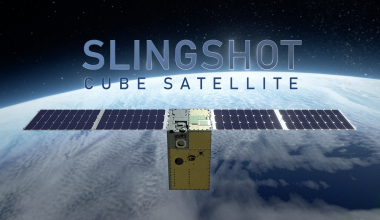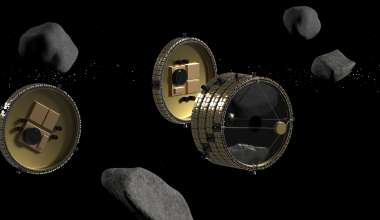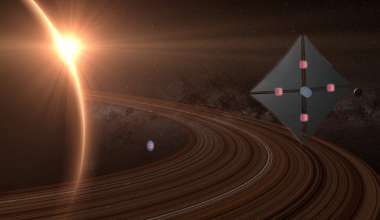The laser communication system, carried by the two low-Earth-orbiting OCSD CubeSats also known as AeroCube-7B and Aerocube-7C, successfully transmitted data at a rate of 100 megabits per second which is 50 times greater than typical communication systems for this size spacecraft.
“This is a significant achievement, given that high speed laser communications is mostly done from larger satellite systems,” said Steve Isakowitz, Aerospace president and CEO. “Our talented engineers continue to demonstrate that we are on the leading edge of innovation. I’m proud of this incredible accomplishment by the AeroCube team.”
While laser communications has been implemented in large commercial satellite systems, this is the first step toward using laser communications in small platforms, such as CubeSats.
“Space-to-ground optical communications from a free-flying CubeSat has never been done before, and we’re excited to be involved in this demonstration,” said Todd Rose, the OCSD optical communications lead.
This new technology uses free-space laser communication systems, which are smaller, lighter, and offer higher data rates and enhanced security as compared to the radio frequency systems currently in use.
“These CubeSats are really ground-breaking and we believe this research will have applications in several different technologies and mission areas,” said Dr. Siegfried Janson, one of the principal investigators for OCSD. He and the Aerospace small satellite team designed and built the OCSD spacecraft, and are now taking these smallsats through their paces on orbit.
Each OCSD satellite’s laser is hard-mounted, which means that in order to point the laser, the entire satellite must rotate. This unique design simplifies the laser communications system by eliminating beam steering mirrors, and instead harnesses a highly accurate control system to point the satellite while downloading data. This attitude control system, which includes tiny star trackers, allows the spacecraft to point to an accuracy of 0.025 degrees. This altitude control system is forty times more accurate than was previously possible for a satellite of this size.
Aerospace also completed a proximity maneuver that brought the OCSD satellites within 20 feet of each other as part of their technology demonstration. The OCSD pair determined where they were in relation to each other by using on-board GPS receivers. Inexpensive cameras, beacons, and laser rangefinders will be used in upcoming proximity demonstrations.
To control their movement, the OCSD satellites use a novel propulsion system, designed at Aerospace, that uses water as a propellant. The benefit in using water in place of hazardous chemicals is that it makes it safer for other payloads on the same launch. The CubeSat has a thermal design that keeps the water from freezing. The propulsion system heats the water to steam which is exhausted through the thrusters when propulsion is required.
The two 1.5 unit OCSD CubeSats were launched on Nov. 12, 2017, as secondary payloads on a resupply mission to the International Space Station. They were later deployed on Dec. 6, 2017, from the CYGNUS resupply capsule that carried them to the space station, where they awaited their deployment, from the resupply capsule, several weeks later after the resupply mission was completed. While several goals have been achieved for the mission, testing will continue over the coming weeks for both the laser communications system and the proximity operations mission.
The OCSD mission is funded and managed by NASA’s Space Technology Mission Directorate Small Spacecraft Technology Program.
About The Aerospace Corporation
The Aerospace Corporation is a leading architect for the nation’s space programs, advancing capabilities that outpace threats to the country’s national security while nurturing innovative technologies to further a new era of space commercialization and exploration. Aerospace’s national workforce of more than 4,800 employees provides objective technical expertise and thought leadership to solve the hardest problems in space and assure mission success for space systems and space vehicles. For more information, visit www.aerospace.org. Follow us on LinkedIn and on X: @AerospaceCorp.




